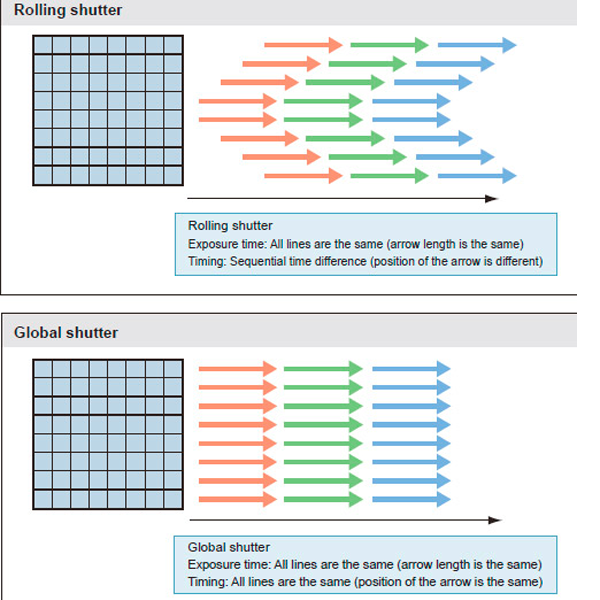
The difference between Rolling Shutter and Global Shutter NewCameraModule
Essentially, global shutters are an advanced way of reading data from the sensor. At present, most camera sensors use a system called rolling shutter. This is where data from the sensor is read line by line, from top to bottom. However, global shutters operate by reading the whole sensor all at once. • Read more: Best mirrorless cameras.

The difference between Rolling Shutter and Global Shutter NewCameraModule
Mechanical shutters are different. They have their own problems, like the limit on the flash sync speed. This is usually only 1/200 s or 1/250 s. The issues with rolling shutter and global shutter also have nothing to do with slow shutter speeds. Again, slow shutter speeds have their own problems.

Rolling Shutter vs Global Shutter What's the difference?
While global shutter reads out the entire sensor at the same time when exposed, some camera sensors readout row by row when exposed, with the readout 'rolling' down the camera sensor rows, which is why this method is known as the rolling shutter. Each row takes a certain amount of time to read out (e.g. 10 μs), known as the 'line time.

Rolling Shutter Vs Global Shutter What S The Difference expertphotography
A rolling electronic shutter, on the other hand, is a non-mechanical (electronic) shutter that exposes pixels on the image sensor in a line-by-line order. This means that a rolling shutter is not as good at capturing fast moving subjects or being used on a moving platform such as a commercial drone. However, since the rolling shutter is.

Rolling Shutter VS Global Shutter Through The Lens Shutter in Digital Video Explained YouTube
More information on global shutter, rolling shutter, and pseudo-global shutter can be seen in Fig.4. Figure 4: The three main shutter formats. Most CCD/EMCCDs have a true global shutter, and readout from all pixels simultaneously as they are exposed to light. Most sCMOS sensors have a rolling shutter, which can lead to image distortions as the.

Global Shutter vs Rolling Shutter What’s the difference and Why does it matter?
Global shutter has an advantage over rolling shutter due to the consistency and accuracy of the images created by CCD sensors and global shutter. The photographer may be guaranteed that the photos made with this shutter will precisely depict the subject being snapped, without any segmentation or "jello effect.".

Rolling Shutter vs Global Shutter Advantages & Disadvantages
A scientific camera with "rolling shutter" has higher quantum efficiency and lower readout noise than that with "global shutter" in the same price range. There are, however, some cases a customer become uneasy after hearing the unfamiliar term "rolling shutter" and viewing greatly distorted images of a rotating fan that were.

Rolling vs Global shutter vibration test YouTube
All pixels start at the same time, all pixels end at the same time. Rolling Shutter starts and ends exposure in a rolling manner from the top to the bottom. A Global Shutter sensor is the best choice if you want to image fast-moving objects, for example for a 100% quality inspection on a production line. We recommend the Alvium 1800 C-040 or.

Rolling shutter versus Global shutter YouTube
This scanning process creates a rolling effect when capturing fast-moving subjects or when the camera itself is in motion. On the other hand, the global shutter exposes the entire image sensor simultaneously — capturing the entire frame in one go, freezing the motion at a specific point in time.. This synchronous exposure ensures that all parts of the image are captured simultaneously.
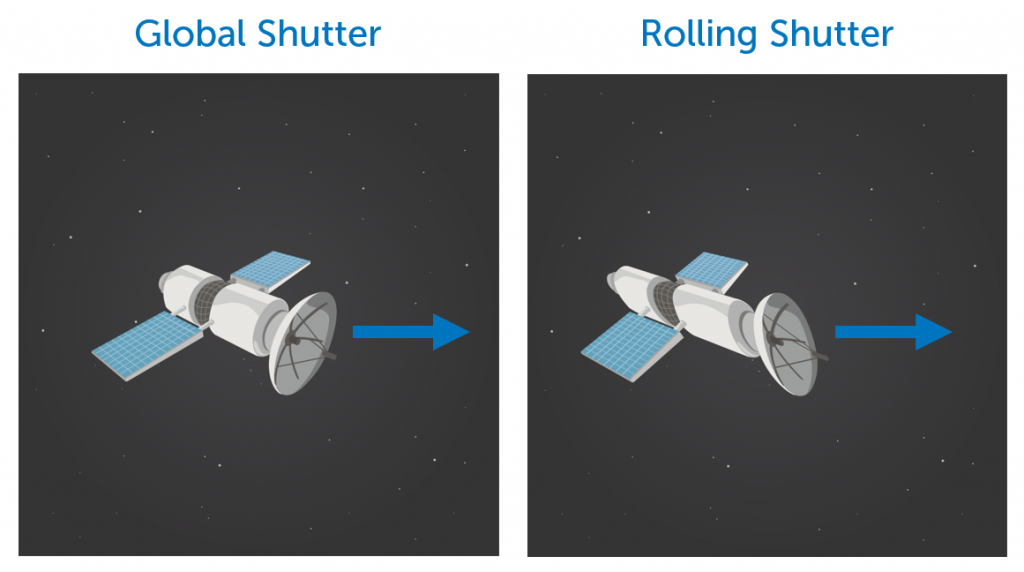
Rolling vs Global Shutter Learn
Selecting the right camera for your embedded vision application is key. An first step is to select if your camera needs a global shutter or that a normal rol.

Global vs. Rolling Shutter Comparison Video YouTube
This unique sCMOS readout mode is known as rolling-shutter mode, as the row currently being digitized "rolls" across the sensor from the top to the bottom. Rolling-shutter mode exposes each row for the same amount of time but at different points in time (Figure 4). In contrast, global-shutter readout modes expose each and every pixel.
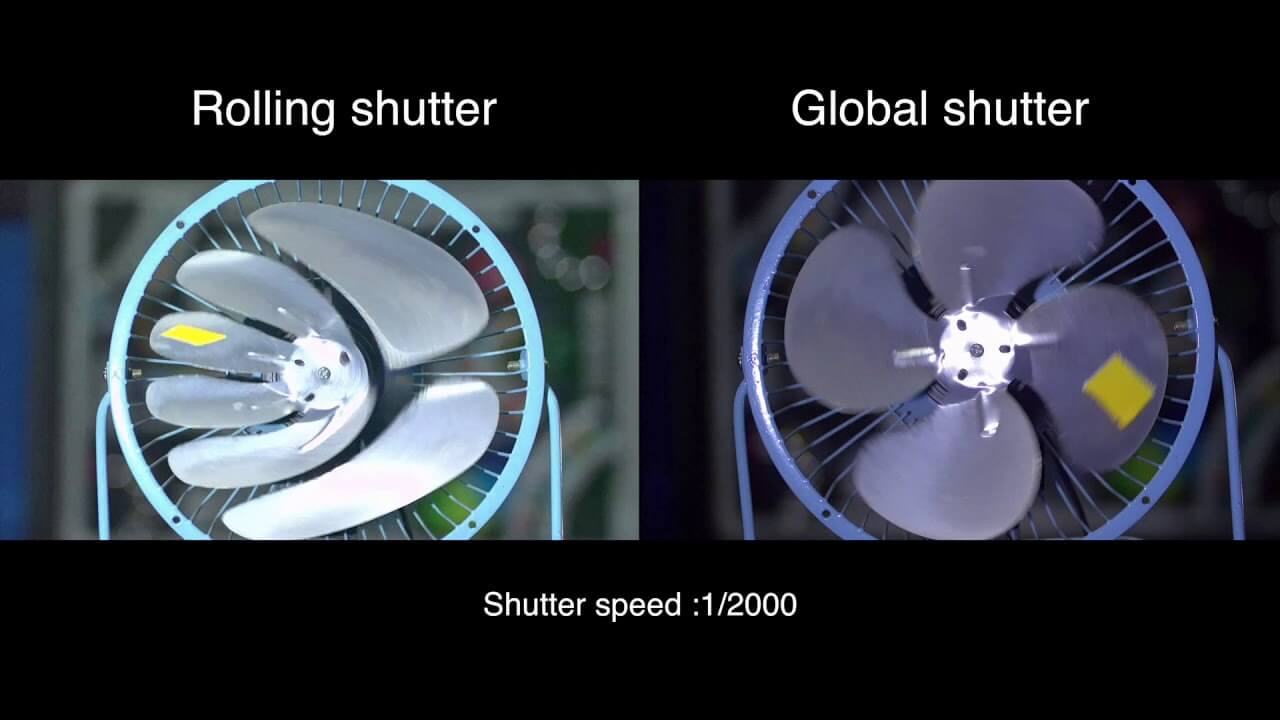
What is Rolling Shutter — Camera Shutter Effect Explained
Well, unlike global shutter where the sensor is exposed all at once, a rolling shutter is exposed in a progressive motion. You can see an example of this exposure in the image below and see how a rolling shutter is " always active and 'rolling' through pixels from top to bottom. " It is this progressive exposure that causes the warping.

Rolling shutter vs. global shutter DAVIS readout Spacetime view of... Download Scientific
If the sensor employs a rolling shutter, this means the image is scanned sequentially, from one side of the sensor (usually the top) to the other, line by line. Many CMOS sensors use rolling shutters. In contrast to that, "global shutter" is the technical term referring to sensors that scan the entire area of the image simultaneously.
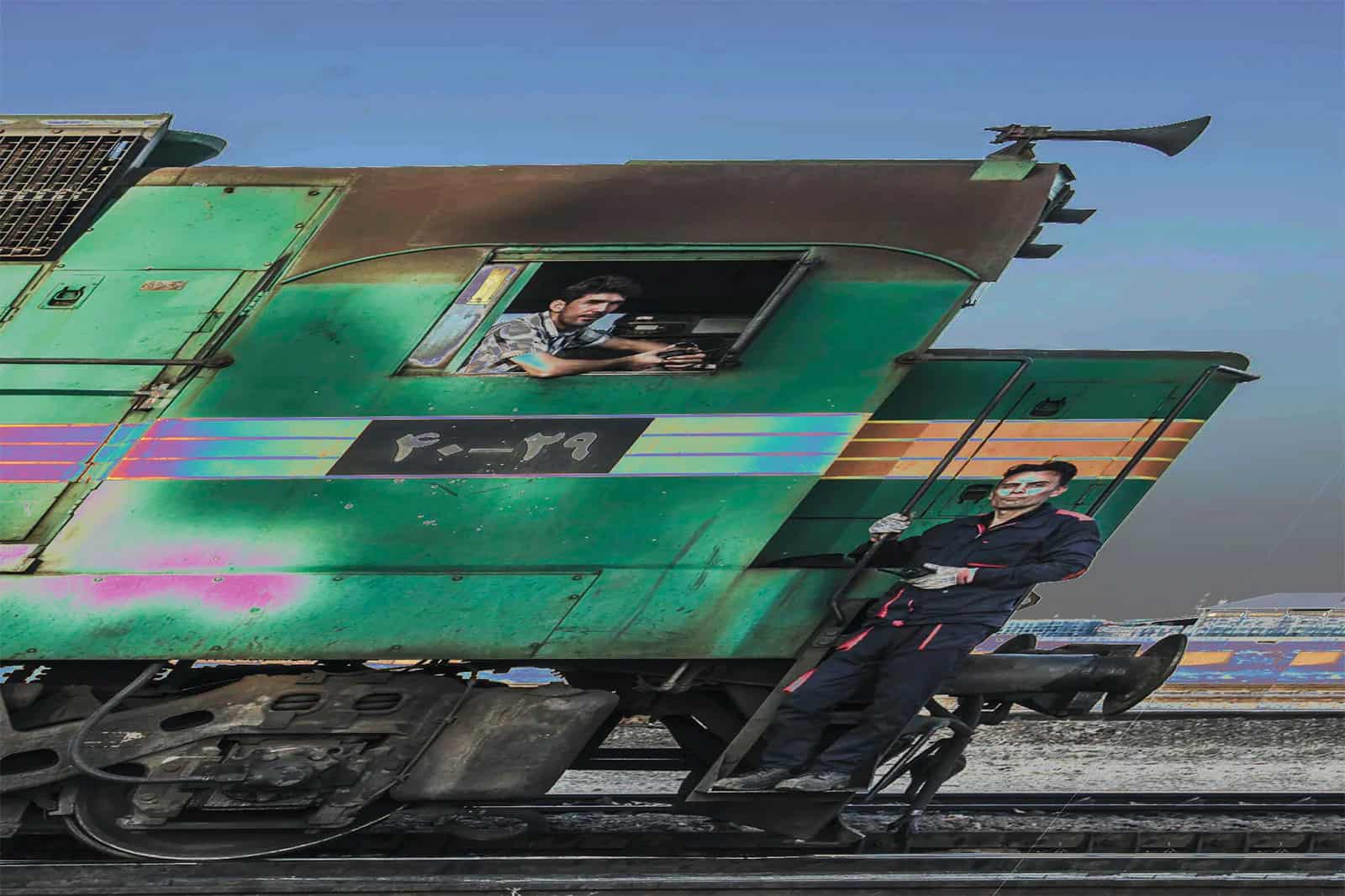
Rolling Shutter vs Global Shutter Camera Effects Explained Mosaic51
Enjoy up to 90% off only today. Best deals in Australia. Worry-free post-sales guarantee! Ready to shop and save? Explore amazing deals on the Temu App. Free shipping & return.

Global Shutter vs Rolling Shutter eVision Hub Ep 01 econ Systems YouTube
Unlike global shutter cameras, the rolling shutter mode in a camera exposes the pixel rows one after the other, with a temporal offset from one row to the next. At first, the top row of the image starts collecting the light and finishes it. Then the next row starts collecting light.
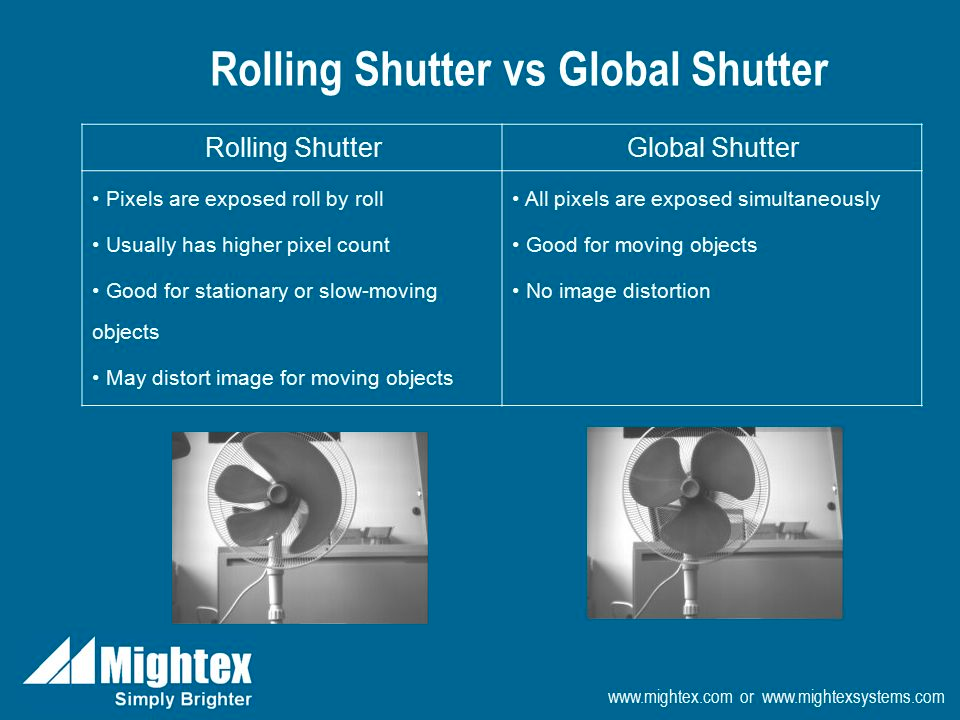
Camera Rolling Shutter和Global Shutter的区别极客笔记
Global Shutter vs. Rolling Shutter. A global shutter is a sensor that captures the entire image simultaneously, eliminating motion artifacts. In contrast, a rolling shutter exposes different parts sequentially, potentially causing distortions. The choice depends on application needs and considerations of motion handling and cost.